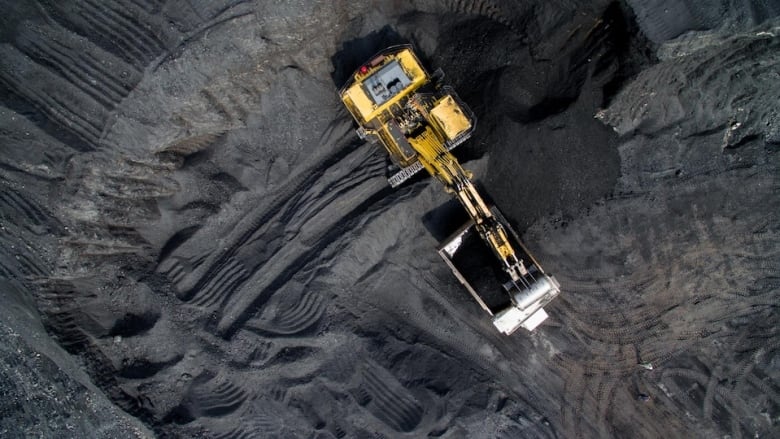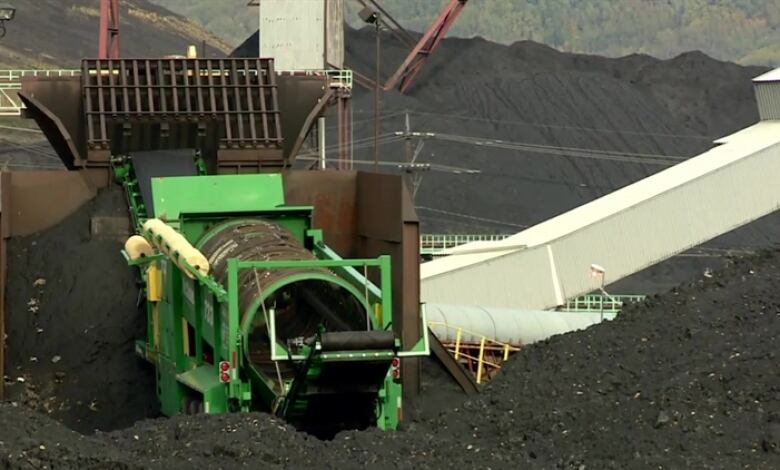COVID-triggered closure of troubled Grande Cache mine leaves workers in limbo
'We've been told that it's going to open up again. But when?'

Four months after it was shuttered due to the COVID-19 pandemic, the troubled Grande Cache coal mine remains inactive, leaving more than 200 workers in limbo.
The open pit and underground mine, 430 kilometres northwest of Edmonton, was shut down in May, as fears of the virus sent the economy into lockdown and triggered a decline in demand that sent global coal prices plunging.
The closure was described by the current owners, CST Group Ltd., as temporary. But as the months pass, workers are growing increasingly wary about the prospect of a permanent shutdown as the virus and the recession linger.
Many workers have already left in search of work elsewhere. Many who have remained are getting by on government assistance and wondering how long they can hold on.
"Frustration. Absolute frustration," said Bob Parker, a laid-off operator who serves as union president for the United Mine Workers of America 2009.
It's like if you're sick and it just seems to get worse and worse and worse, because you don't know what's making you sick.-Bob Parker
"It's like if you're sick and it just seems to get worse and worse and worse, because you don't know what's making you sick.
"That's what these guys are going through. They have no clue when this mine is going to open up again. We've been told that it's going to open up again. But when? We hear anywhere from this fall to five years from now."
Parker said he was told the mine closed for health reasons, not economic ones.
He said company management expressed concern about the spread of COVID-19 within the mine and the wider community. With many businesses resuming operations across the country, he had hoped the mine would follow suit.
CST Group Ltd. has not responded to requests for comment on the closure or a possible timeline for reopening.
"They were trying to keep COVID out of Grande Cache," said Parker, who worked at the mine for three years. "It made sense to me. But what's not making sense to me now is the length of time that we've been shut down with the rest of the country opening back up again."
A critical deadline has already come and gone, Parker said. Since the mine has now been closed for more than 90 days, the workers have lost their seniority, call-back rights and employer-side RRSP contributions.
There has been no communication between the miners and the company, Parker said.
"We want clear communication, even if it's something we don't want to hear," he said.

Greg Didow was among the workers laid off in May. He managed to make ends meet through the summer months with his concrete business.
He considers himself lucky. Others have had to sell their vehicles or their homes to pay the bills.
"A lot of people packed up and left," he said. "They didn't live here. They just came out here and worked."
He doesn't expect the mine will reopen until the price of coal stabilizes. He remains hopeful, however. Unlike the previous closure in 2015, when the equipment was left to rust, maintenance work is still being done, he said.
"The last time when it shut down, everything was just left the way it is," he said.
"When they went in to reopen, they had pumps that were frozen in, lines that were frozen and all kinds of stuff that had to be done. This year, they're doing the work and making preparations for the winter.
"The reopening costs would be astronomical if things start to freeze."
Permanently shutting the mine would have dire consequences on the community, a hamlet all too familiar with the economic whiplash of Alberta's coal industry, where the boom-bust cycle has repeated itself again and again.
The mine first shuttered in the 1970s when coal prices tanked and nearly half the workforce was laid off. The provincial government at the time launched an inquiry into the boom town's woeful financial situation.
Activity at the mine rebounded in the mid 2010s as coal prices surged and a pair of Asian commodity-trading firms bought up the operation. By 2014, the new owners were deeply in debt. They gave up and sold the company for $2.
The following year, after prices sunk further, the underground mine was shuttered, throwing hundreds out of work.
In November 2018, with its population drained and tax revenues gutted to the point where basic infrastructure could no longer be maintained,the town of Grande Cache voted to dissolve. Itwas officially absorbed by the Municipal District of Greenview No. 16.
New owners took over the mine in 2018 and restarted operations amid a new rally in coal prices. But the community remains largely subject to the whims of international market forces.
Since then, coal prices have plunged again in the wake of reduced demand related to COVID-19.
'It didn't surprise me'
Metallurgical coal from Grande Cache's mines has historically been shipped mainly to customers in Asia, with some coal heading to Brazil, Europe and other parts of Canada.
The coal is used to make steel, as opposed to thermal coal, which produces electricity and is being phased out as part of Alberta's commitment to stop burning coal to generate electricity by 2030.
Tony Knutson, a principal analyst in metallurgical coal research with Wood Mackenzie, said growth was expected this year until the pandemic hit.
This year, 30 million tonnes of global demand has been lost. Prices bottomed out around $100 (Queensland benchmark) this summer.
"I think the Grande Cache closure was obviously related to that COVID demand destruction but they also have one of the higher cost mines," Knutson said.
"There are price pressures, they kind of go hand in hand. They're not one of the lower cost producers, it didn't surprise me."
While prices are beginning to rebound, the market is not expected to attain pre-COVID levels again until 2023, Knutson said.
A slight turnaround is expected in the coming quarter. But with the threat of a second wave of COVID-19 threatening to take hold this winter, solid predictions are hard to make.
"It's murky,"Knutsonsaid.
'In the tank'
Duane Didow, a councillor for the Municipal District of Greenview, said the mineclosure has once again drained the community's population, triggering an exodus of workers.
"It's a definite blow," he said. "There's not a lot of other jobs kicking around in the area, so everyone just kind of making do."
"I wonder what's going to happen in the next four to six months, with CERB going to be gone and when [employment insurance] runs out on people."
He said the community is more economically diversified than it ever has been. There is forestry work and the nearby prison provides steady jobs. The community can withstand another storm.
"The price of metallurgical coal is in the tank. I believe once it goes back up, the mine will start up again. You know everything is based on profit, I believe.
"We're always open to communication but there's not a lot that we can do. You know, it's a private enterprise. If it goes, it goes.
"The population goes up and down, people come and go. We struggle but we get by."
With files from Jordan Omstead












_(720p).jpg)


 OFFICIAL HD MUSIC VIDEO.jpg)
.jpg)



























































































